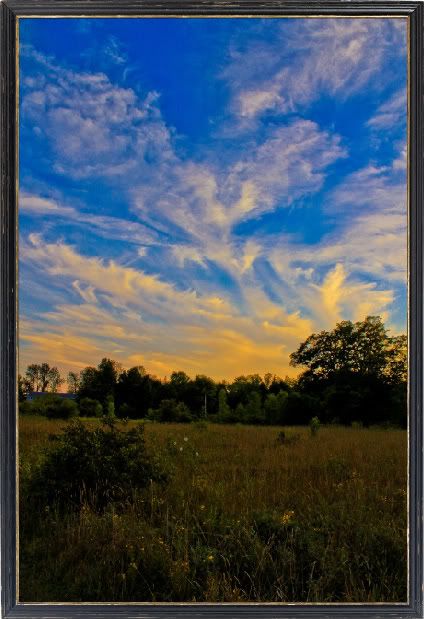I had such a hard time with this shot, Either the sky was totaly blown out, or the ground was just a shaddow.

This is a discussion on I Love Earth within the Show your photo (Color) - Landscape & Nature (flowers, mountains, storms etc.) forums, part of the Photography & Fine art photography category; I had such a hard time with this shot, Either the sky was totaly blown out, or the ground was ...
I had such a hard time with this shot, Either the sky was totaly blown out, or the ground was just a shaddow.

This is exactly why people play with HDR (layering/merging of bracketed exposures). In many situations like this one you simply cannot get good shadow and highlight detail in one frame. This shot isn't a bad attempt to get both.
- Please connect with me further
Photo tours of Montreal - Private photography courses
- Join the new Photography.ca Facebook page
- Follow me on Twitter http://twitter.com/markokulik
- Follow me on Google+ https://plus.google.com/u/0/111159185852360398018/posts
- Check out the photography podcast
"You have to milk the cow quite a lot, and get plenty of milk to get a little cheese." Henri Cartier-Bresson from The Decisive Moment.
Yea, I just heard about that for the first time yesterday.. I will have to try it out some time... what program would you use to merge the shots?
Photoshop CS5 is really good for HDR. Many other people also use photomatix.
- Please connect with me further
Photo tours of Montreal - Private photography courses
- Join the new Photography.ca Facebook page
- Follow me on Twitter http://twitter.com/markokulik
- Follow me on Google+ https://plus.google.com/u/0/111159185852360398018/posts
- Check out the photography podcast
"You have to milk the cow quite a lot, and get plenty of milk to get a little cheese." Henri Cartier-Bresson from The Decisive Moment.
or you could try graduated neutral density filters. they worked back in film days and they work now. makes you more aware of your exposures and how little things create big differences in your photos.
- Please connect with me further
Photo tours of Montreal - Private photography courses
- Join the new Photography.ca Facebook page
- Follow me on Twitter http://twitter.com/markokulik
- Follow me on Google+ https://plus.google.com/u/0/111159185852360398018/posts
- Check out the photography podcast
"You have to milk the cow quite a lot, and get plenty of milk to get a little cheese." Henri Cartier-Bresson from The Decisive Moment.
Here's some good starter info - Neutral density filter - Wikipedia, the free encyclopedia
Basically what a graduated ND filter will do for you is reduce the light coming into your lens for a portion of your scene. Because they're graduated from full density on the top to no density on the bottom, you can place the line between them in your scene at or near the horizon. This will even out the exposure by physically darkening the parts of the picture that are too light and giving you a more balanced dynamic range. I use them for sunrises particularly so that the foreground gets the light it needs, but the sky doesn't get cooked.
here's an example if you don't mind my posting in your thread -

Wow that is a fantastic shot!!!!!
I tend to take a lot of sunset photo's so maybe i should invest in one.
My house faces west and every night I get an amazing show..
I have been up on my roof a few times with this camera since i got it but haven't really been able to capture what it really looked like. One thing that I hate is there are 50 million power wires in my view... so its almost inpossible to compose a great shot unless i use that sky only which looks very empty.
powerlines are the bane of a landscape photographer's existence.
oh and thanks for the compliment. I used both a polarizer and a GND on that one. It's crazy.

Bookmarks